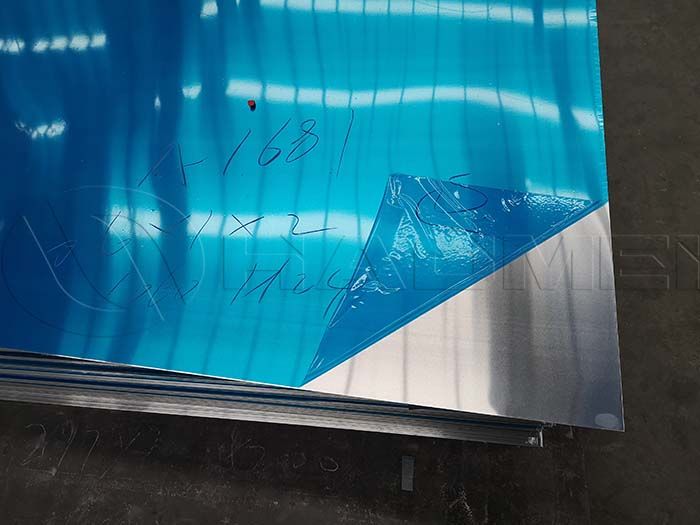Marine Grade Aluminum Alloys 5052 5083
The marine aluminum sheet is soaked in water all the year round and requires high corrosion resistance. The aluminum alloy 5052 is an Al-Mg alloy with excellent corrosion resistance and medium strength. It is suitable for the manufacture of economical aluminum alloy ships. In addition to being used in the hull, it can also be used in cable bridges, ship sinks, ship compartment floors and other parts on ships.
5052 aluminum sheet is a typical 5xxx aluminum alloy. The Mg content is 2.2%-2.8%. It has the characteristics of light weight, medium strength, good corrosion resistance and weldability, and easy processing and forming.

Among its mechanical properties, the tensile strength σb can reach 215-265Mpa, and the elongation δ5≥5%. Under different work hardening and heat treatment states, the mechanical properties will be different.
Aluminum alloy yachts for freshwater lakes are mostly made of 5052-H32 or 5052-0 aluminum plates, while luxury yachts on the sea are generally made of high-magnesium alloy 5083H116 or 5083H321 aluminum plates. The thickness of the marine grade aluminum alloy plate is generally 3-30mm, and the thickness below 12mm is more widely used.
In the ship design industry, the 5083 ultra-wide aluminum plate in the state of 5083H116/H321/H112 is mostly used, and it is used in the main deck of the ship, the diesel engine pedestal, the side of the ship, and the outer side of the ship. 5083 h116 aluminum plate is the most widely used military and civilian aluminum alloy in the field of ships, and has broad application prospects in the fields of military speedboats and high-speed passenger ships.
The content of Mg and Mn in the 5083 alloy is controlled at the middle and upper limits, which can ensure that the strength performance of the 5083 aluminum plate meets the requirements, and the plasticity and corrosion resistance of the 5083 aluminum sheet are also good at this time.
Cr plays a supplementary strengthening role in the 5083 alloy, which can increase the recrystallization temperature, and Ti refines the cast structure. Special attention should be paid to controlling the content of impurities Fe and Si.
When the content of Fe is high, the plasticity and corrosion resistance of the alloy will be reduced; compared with Fe, si has a greater negative impact on plasticity, and the mass fractions of Fe and Si should be controlled below 0.25% respectively.









